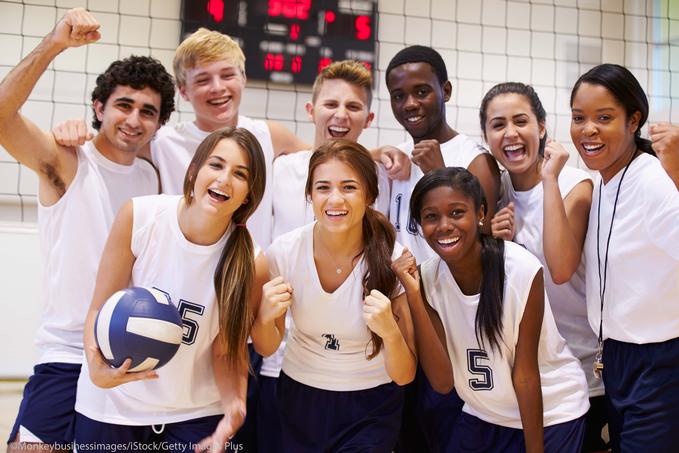
Published 9/6/2018
ROSEMONT, Ill. (September 6, 2018)–After school sports are a large part of many adolescent lives. These sports provide healthy competition that shapes young athletes where they may develop self-discipline and teamwork, and improve physical fitness and coordination. However, if sports are not played carefully and symptoms of injury are not recognized, severe damage can occur.
According to the Consumer Product Safety Commission (CPSC), in 2016, emergency departments, doctors’ offices and clinics treated:
EXPERT ADVICE
“It’s important to remember, young athletes’ bones, muscles, tendons and ligaments are still developing during their adolescent years,” said AAOS spokesperson and orthopaedic sports surgeon Anita Rao, MD. “This makes them more vulnerable to injury. An injury to the growth plate of an adolescent who is continuing to grow can cause bone deformity, creating problems for life.”
The AAOS recommends the following fall sport safety tips for young athletes:
According to the Consumer Product Safety Commission (CPSC), in 2016, emergency departments, doctors’ offices and clinics treated:
- 189,829 people for volleyball-related injuries;
- 974,865 for football-related injuries;
- 618,955 for soccer-related injuries; and
- 98,824 for cheerleading-related injuries
EXPERT ADVICE
“It’s important to remember, young athletes’ bones, muscles, tendons and ligaments are still developing during their adolescent years,” said AAOS spokesperson and orthopaedic sports surgeon Anita Rao, MD. “This makes them more vulnerable to injury. An injury to the growth plate of an adolescent who is continuing to grow can cause bone deformity, creating problems for life.”
The AAOS recommends the following fall sport safety tips for young athletes:
- Always get a pre-participation sports physical examination to ensure you’re in proper physical condition to play a sport.
- Know and abide by the rules of a sport.
- Wear appropriate protective gear (for example, a hard-shell helmet and padding for football, shin guards for soccer).
- Know how to correctly use athletic equipment.
- Always warm-up before playing.
- Stay hydrated.
- Avoid playing when very tired or in pain.
- Avoid overuse injuries by taking regular breaks and playing other sports. Understand the signs of an injury caused by overuse. These signs include pain that cannot be tied to an acute injury and increases with activity, swelling, changes in form or technique, decreased interest in practice.
- Wear shoes that provide strong ankle and arch support.
More Information about the AAOS
With more than 38,000 members, the American Academy of Orthopaedic Surgeons is the world’s largest medical association of musculoskeletal specialists. The AAOS provides educational programs for orthopaedic surgeons and allied health professionals, champions and advances the highest quality musculoskeletal care for patients, and is the authoritative source of information on bone and joint conditions, treatments and related issues.
With more than 38,000 members, the American Academy of Orthopaedic Surgeons is the world’s largest medical association of musculoskeletal specialists. The AAOS provides educational programs for orthopaedic surgeons and allied health professionals, champions and advances the highest quality musculoskeletal care for patients, and is the authoritative source of information on bone and joint conditions, treatments and related issues.
# # #
Visit AAOS, at:
Newsroom.aaos.org for bone and joint health news, stats, facts, images and interview requests.
ANationinMotion.org for inspirational patient stories, and orthopaedic surgeon tips on maintaining bone and joint health, avoiding injuries, treating musculoskeletal conditions and navigating recovery.
Orthoinfo.org for patient information on hundreds of orthopaedic diseases and conditions.
Facebook.org/AAOS1
Twitter.com/AAOS1
Instagram.com/AAOS_1
Newsroom.aaos.org for bone and joint health news, stats, facts, images and interview requests.
ANationinMotion.org for inspirational patient stories, and orthopaedic surgeon tips on maintaining bone and joint health, avoiding injuries, treating musculoskeletal conditions and navigating recovery.
Orthoinfo.org for patient information on hundreds of orthopaedic diseases and conditions.
Facebook.org/AAOS1
Twitter.com/AAOS1
Instagram.com/AAOS_1
Contact AAOS Media Relations